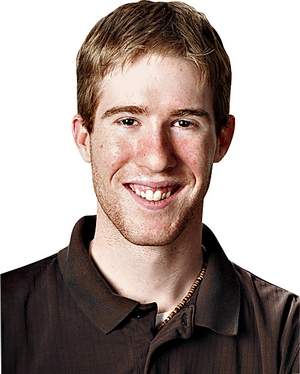Perspective Badly Needed in Abuse Crisis
The Times-Herald
According to one study, approximately 546,000 children in the United States were sexually abused last year. According to another, 16 percent of youths 14-17 years old are sexually abused in any given year in the United States. A third study says that over the course of their school careers, nearly 10 percent of K-12 students will be the victim of some form of sexual abuse at school, with one in 10 of those involving a teacher or school employee. If you draw the numbers out, that means roughly 4.5 million students currently in grade or high school have been abused by an educator, or 375,000 annually. Unfortunately, there has never been a widespread, authoritative analysis of the issue of child sexual abuse in the United States to help shine light on the instances of exactly where, when, how often and by whom this scourge on civilized society continues to take place. But if the scores of smaller studies indicate one thing clearly, it’s that it does continue to take place — in schools, homes, churches, day cares, and anywhere else adults have easy access to children — at an alarming rate. The Catholic Church was rightly called on the issue of child sexual abuse when the Boston Globe first revealed the scope of the problem in 2002: A frightening 4,400 priests — 4 percent — had been accused of abusing a minor in a 52-year span between 1950 and 2002, with the vast majority of those cases between 1960-80. While the Catholic Church should be held to a higher standard in society, given the trust it once possessed and especially when dioceses were accused of hiding or ignoring abuse, 4 percent is still less than half the rate at which teachers — even today — are accused of abusing their students. None of this is to say the issue of child sex abuse in the church is nominal. It isn’t, and those who committed crimes in the past should still be accountable. But coverage and awareness of sex abuse should be applied proportionally, if not for the church’s sake, for the victims’. Unfortunately, that hasn’t happened. Eleven years after the Globe report, the statistics on child sex abuse in the Catholic Church have improved dramatically, in no small part due to the bishops’ stringent new reporting and oversight rules. So much progress has been made that last year, while 397 allegations were made against priests in the U.S., only 34 of those cases involved abuse in 2012, and just 22 of those allegations were deemed credible. There were 22 cases of possible abuse by Catholic priests last year out of an estimated half-million cases. Deplorable as every one of them is, those numbers aren’t epidemic, although media coverage continues to treat it that way. The latest case you may have heard involves the current archbishop of St. Paul and Minneapolis, Archbishop John Neinstedt, a former Detroit priest and bishop. Last week, an unnamed male accused the archbishop of inappropriately touching him on the behind during a group photo session following a confirmation ceremony in 2009. The archbishop, while vehemently denying the accusation, immediately removed himself from public ministry while the matter is investigated by police. Without passing judgment, it’s worth critically considering. Reports point out that it has never been suggested by anyone that the archbishop has an abusive past, and the nature of the single allegation raises more than a few eyebrows. Can anyone really imagine an archbishop, surrounded by 80-plus kids and their parents in a group photo on the sanctuary steps, choosing at that moment to grope a young boy? If so, it’s due in no small part to the incessant and grossly unfair caricature of Catholic clergy as deviants. Even some in the media have taken a pause at Archbishop Neinstedt’s anonymous accuser. The St. Paul Pioneer Press ran a column this week noting the timing of the accusation — days after the archbishop apologized for the archdiocese’s past handling of abuse — and didn’t stop short of calling the suggestion of the archbishop’s very brazen, public offense “ridiculous.” It might be true. It might be half-true. It might be unintentionally true (an ill-advised pat?). But there’s a very good chance it’s not. If Archbishop Neinstedt really did what he’s accused of doing, he deserves the derision. But if he didn’t, then he’s the victim, and yet another effigy for the public to burn in relation to a scandal that — except for the aftermath — hasn’t been widespread in 40 years. The Catholic Church will continue to be held up to ridicule and scorn as the hotbed of pedophilia, while the more common risks of child abuse today continue to be routinely ignored. The St. Paul Pioneer Press hits it on the head when it expresses the reaction that best describes the feeling: “Nienstedt might not be everybody's cup of tea, especially in this day of cafeteria picking and choosing among canonical truths. He has not exactly wandered the streets as a man of the people. But neither does he deserve this inelegant and quite possibly preposterous charge made against him in the days before Christmas.” But a narrative only works so long as we play along with it. And the narrative about the Catholic Church and abuse has become so ingrained in the culture that it’s hard to imagine anything changing that soon. Even the real data.
|
.
Any original material on these pages is copyright © BishopAccountability.org 2004. Reproduce freely with attribution.
